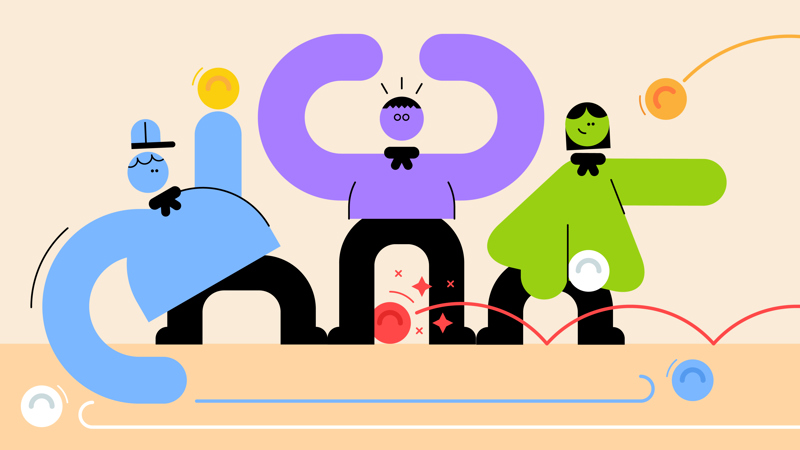
Play Game of Aim
You’ll need
- Soft balls
Before you begin
- Use the safety checklist to help you plan and risk assess your activity. Additional help to carry out your risk assessment, including examples can be found here. Don’t forget to make sure all young people and adults involved in the activity know how to take part safely.
- Make sure you’ll have enough adult helpers. You may need some parents and carers to help if you’re short on helpers.
Play the game
- Everyone should split into two equal teams.
- Larger groups may want to split into more teams. You could run a few games at once, or you could play a tournament where teams take it in turns to play or watch.
- The teams should line up facing each other, with the teams about a metre or two apart
- Each team should stand in a line, side to side, with their legs open wide. Each player’s heels should touch the heels of the teammates next to them.
- Give each team the same number of tennis or small sponge balls – the more, the better.
- When you start playing, everyone should try to throw or roll their tennis balls between the legs of a player on the other team. Players should use their hands to defend and stop the balls going through their legs.
- No one should move their feet. For example, they shouldn’t close their legs or try to kick the ball away.
- When a ball goes through a player’s legs, they’re out. They should step out of the line, and their teammates should shuffle up to fill the gap.
- The player who's out should go behind their team to find balls and take them back for their team to roll again.
- The team with the most players left at the end is the winner. You can play within a set time limit and see which team loses the most players, or you can play until a team loses all of its players.
Reflection
This game was a really fun way to be physically active. Can anyone name a skill that this game helped people work on? People should take it in turns to share their ideas, they might include aiming, throwing, defending, or working together. Where else might these skills be useful? They’re all useful for plenty of other sports. When people exercise, their heart rate often increases because their body works hard to get more oxygen and blood to their muscles. Being active can make us feel calmer, too.
Safety
All activities must be safely managed. You must complete a thorough risk assessment and take appropriate steps to reduce risk. Use the safety checklist to help you plan and risk assess your activity. Always get approval for the activity, and have suitable supervision and an InTouch process.
- Active games
The game area should be free of hazards. Explain the rules of the game clearly and have a clear way to communicate that the game must stop when needed. Take a look at our guidance on running active games safely.
- Make it trickier by making it so people can only use one hand to stop the tennis balls going through their legs. You could even play so they can’t use their hands at all.
- You could also play this game in a circle – everyone plays for themselves, and tries to throw the ball between someone’s legs while defending with their hands. The person who defends then throws next.
The main focus of this game is aim, so it doesn’t matter if not everyone is able to make an arch with their legs, or defend. Teams could take it in turns to roll a ball through the legs of someone on the opposite team, or they could aim for a target such as a certain bit of wall.
All Scout activities should be inclusive and accessible.
You could monitor your heartbeat before and after playing the game and see if it changes. Talk as a group about what changed, and try comparing any changes to what happen with different physical games. This could count towards requirement three of the Beavers Health and Fitness Activity Badge.


